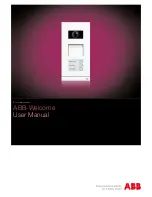
FP-AI-112 and cFP-AI-112
6
ni.com
Input Ranges
The input ranges for voltage signals are 0–1 V, 0–5 V, 0–10 V,
±
60 mV,
±
300 mV,
±
1 V,
±
5 V, and
±
10 V. To prevent inaccurate
readings, choose an input range such that the signal you are
measuring does not exceed either end of the range. Signals that
greatly exceed the configured range can adversely affect
measurements on other channels.
Measurements on a channel may be invalid for up to one update
period after you change the input range.
Overranging
The [c]FP-AI-112 has an overranging feature that measures a little
beyond the nominal values of each range. For example, the actual
measurement limit of the
±
10 V range is
±
10.4 V. The overranging
feature enables the [c]FP-AI-112 to compensate for field devices
with span errors of up to +4% of full scale. Also, the overranging
feature helps prevent errors caused by clipping.
Filter Settings
Three filter settings are available for each channel. The filters
on the [c]FP-AI-112 input channels are comb filters that provide
notches of rejection at multiples, or harmonics, of a fundamental
frequency. You can select a fundamental frequency of 50, 60,
or 500 Hz. At the 50 and 60 Hz settings, the [c]FP-AI-112 applies
95 dB of rejection at the fundamental frequency and at least 60 dB
of rejection at each of the harmonics. In many cases, most of the
noise components of input signals are related to the local AC power
line frequency, so a filter setting of either 50 or 60 Hz is best.
The 500 Hz filter setting provides faster update rates but much less
accurate measurements.
Update Rate
The update rate of the [c]FP-AI-112 is determined by the filter
settings and the number of input ranges in use. Higher filter
settings and fewer input ranges yield faster update rates. Use the
following formula to determine the approximate update period:
1
(
number of channels with 50 Hz filter
)
×
0.061 s +
(
number of input ranges with 50 Hz filter
)
×
0.12 s +
(
number of channels with 60 Hz filter
)
×
0.051 s +
1
The update rate is the reciprocal of the update period.


































